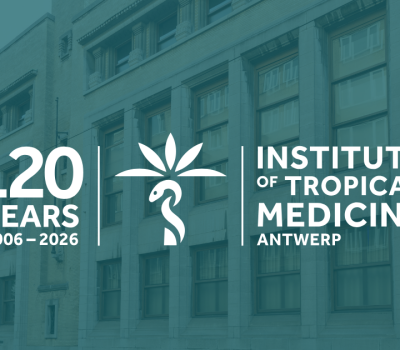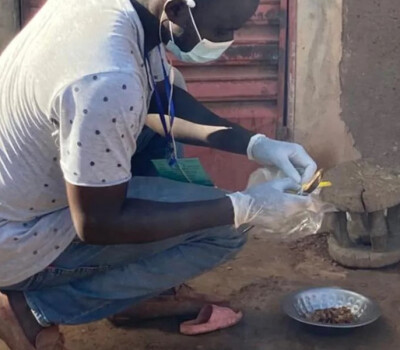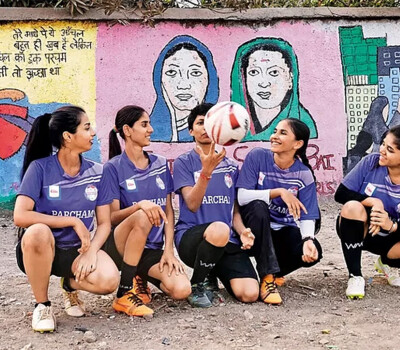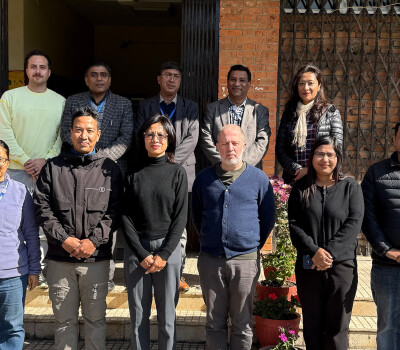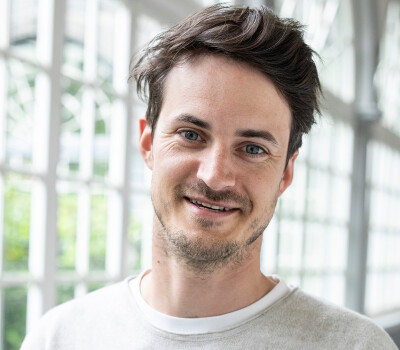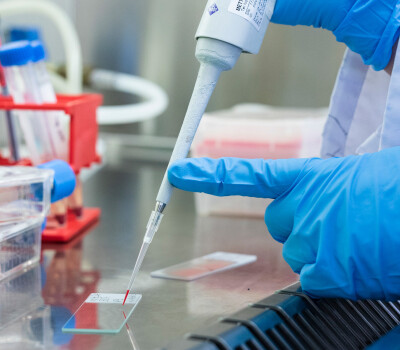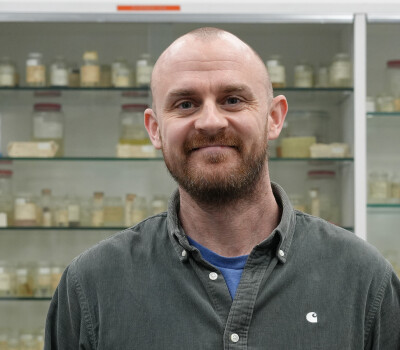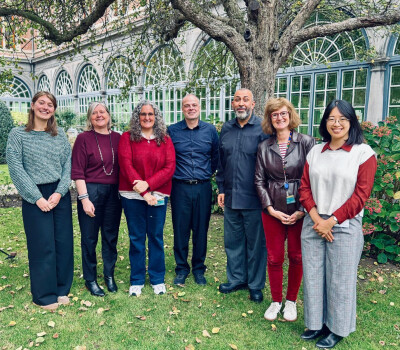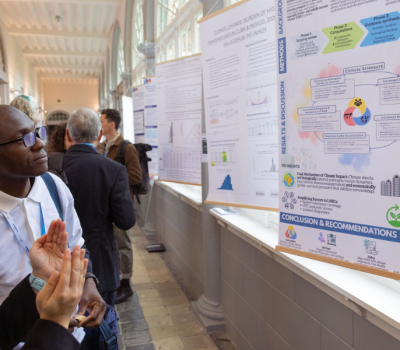An Afternoon with the Dragon Slayer
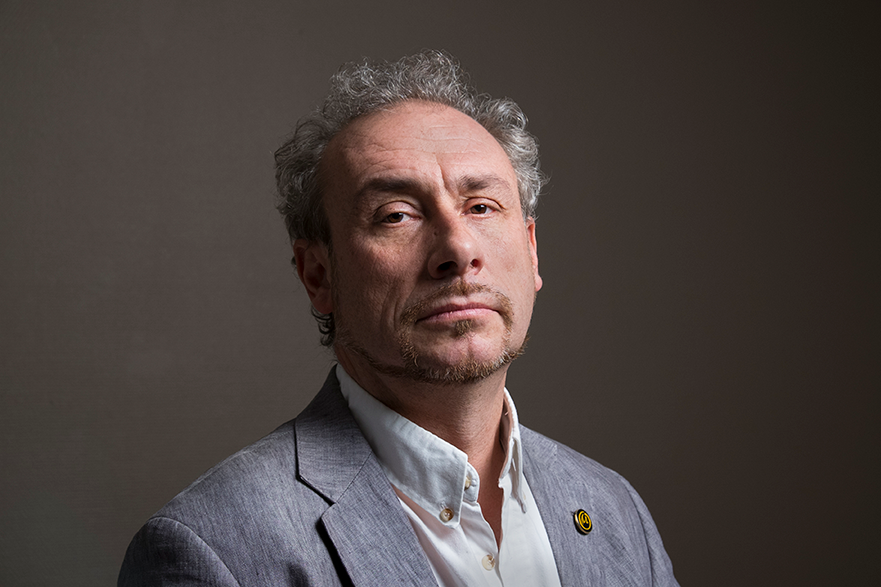
Medicine is a small part of what may be defined as the biomedical sector. And there are many researchers and professors of the biomedical sciences who are not medical doctors.
But whether doctors or scientists (e.g., biologists, immunologists, virologists etc.) these are the men and women who are forever expanding the field of human knowledge and extending the boundaries of innovation.
And just as a law student dreams of meeting a famous Senior Counsel here in Kenya or maybe a British Queen’s Counsel, or a Harvard Law School professor if he or she travels abroad. And just as, being a writer, it had been my dream that I might one day meet the Nobel Prize winning Colombian writer Gabriel Garcia Marquez (who alas, has since died, thus denying me that pleasure). In much the same way, as a medical student I have always dreamt of meeting one of the giants of biomedical research, so that I could see what makes them so special, and how they climbed to the commanding heights of my professional field.
For it is these giants who create new paths to new knowledge, and new ways of healing the sick. And what the rest of us do is walk in their footsteps as we try and use the knowledge and techniques they have created, to treat our patients.
What is the mark of greatness in a biomedical researcher? It lies in the ability to device a way to confront and finally subdue a disease which has tormented mankind over decades or even centuries.
Now here is where the problem comes in, contrary to what you may have seen on C.S.I and other investigative TV series (where after a quick look through the microscope and a few seconds deliberation always produce results) biomedical research is not exciting in the dramatic sense. The giant steps taken in this field are not as emotionally engaging, say as a great footballer scoring a winning goal or a champion athlete breaking a world record. It involves slow systematic and even tedious laboratory work and progress comes in tiny steps rather than in one dramatic moment.
And then there is something else, unlike writers and athletes whose work centres on self promotion and who even hire professional publicist, in research self promotion is discouraged. So, there are many scientists whose long hard hours in the laboratory have created biomedical solutions to long standing health challenges and saved many lives and yet they remain largely unknown outside their professional fields.
However, as a medical student, I know greatness when I see it, when it comes to biomedical research.
It's a real pity that it only takes someone like me, who understands medicine to recognise the landmark achievements of biomedical research as applied to neglected tropical diseases.
If I was to put it in terms which even a child could understand, I would compare it to a knight in a fairy tale who comes out charging to slay some dragon because diseases are like dragons and whoever works at eradicating them can be termed a hero.
I don't suppose you have ever heard of leishmaniasis. And if you have, I bet you can't pronounce it.
This disease is spread by a little-known sand fly; and its symptoms, depending on the form, include, among other things, skin sores, weight loss, nose bleeding etc. It is a classic example of a 'neglected tropical disease' in that it seems only to exist in the tropical places where most people are poor, and as such there is no strong motive for the global pharmaceutical corporations to invest their money in finding either treatments or cures for it. The work on this kind of ‘neglected tropical disease’ therefore falls to specialists in places like the Institute of Tropical Medicine in Antwerp (ITM), which the Belgian government supports through public funds.
And for me, the word Leishmaniasis will always ring in my ear because my interest in finding out more about it, is what led me to meet Professor Jean-Claude Dujardin, Head of the Department of Biomedical sciences at ITM and one of the world's top authorities on leishmaniasis.
Professor Jean-Claude Dujardin was part of the team responsible for the genome sequencing of 204 Leishmania donovani strains which in simple terms provided more information on the DNA structure of the parasite. As with many organisms, a better understanding of the fundamental structure opens the door to endless opportunities. And in this case, it was in the form of learning of the emergence of the parasite's resistance to drugs which would aid in further studies in drug and vaccine development. After all, this is what real research revolves around, understanding the basics to ensure the evolution and subsequent application of knowledge.
His contribution spans over continents, one example that does come to mind is a study in India and Nepal which demonstrated that the decline in efficacy of Miltefosine, a drug used in leishmaniasis was not only related to drug factors such as dosage, but to host factors such as gender and age. This facilitated a more holistic approach when it comes to treatment options.
And the list goes on, with studies published in various journals and with some being too scientific even for my mind to comprehend. Wouldn't you have some questions if you read a publication with statements like the demonstration that antimony resistance also concerns a better manipulation of the macrophage by the resistant parasite'? Perhaps, you can then understand why I was anxious to meet with Professor Jean-Claude Dujardin, not only to learn more about leishmaniasis but to get a brief glimpse at the 'minds behind it all or at the very least understand what some of the studies were about.
I met him at his office by appointment. The first thing that struck me was how informally dressed he was (no formal suit and tie) as he stood there smiling. And in the forty minutes I spent interviewing him, I got to learn why he is where he is.
The passion with which he discussed the Leishmania projects ITM was involved in (more on this later) and the need to raise awareness for neglected tropical diseases, had me thinking 'Perhaps I should consider specializing in biomedical research. After all, the great Prof Dujardin must surely once have been a humble undergraduate, in his days at Notre Dame de la Paix, Namur, Belgium.
Later that evening though, I knew even if my career will not lead me into research, I absolutely must be part of the effort of raising awareness on neglected tropical disease.
My younger brother tells me that it was after he watched the great Argentinean football player, Lionel Messi, on TV, scoring a gloriously improbable goal that he swore to become a professional footballer. I am glad he has since gone beyond that and now has other professional dreams.
Likewise, as I sat talking to Professor Dujardin in his office, I left there feeling I was walking on air and thinking to myself, “Would it not be a perfect life to be able to work in a department like this? Would it not give meaning to my life if I could walk in the footsteps of a giant of biomedical research such as Professor Jean-Claude Dujardin?”
Now back in Kenya, the writer in me has taken over and I am more inclined to dream that wouldn't it really be something, to live a life in which I meet people like Professor Jean-Claude Dujardin, got to understand their work, and explained its true significance to the world – and more so to Africa.
And I am sure I can do this. After all, I have got you, my reader if you have come this far. And you now have an idea of what leishmaniasis is even if you can't pronounce it.
Author: Diana Wangari Gitau from Kenya, ITM's first journalist-in-residence
Spread the word! Share this story on
